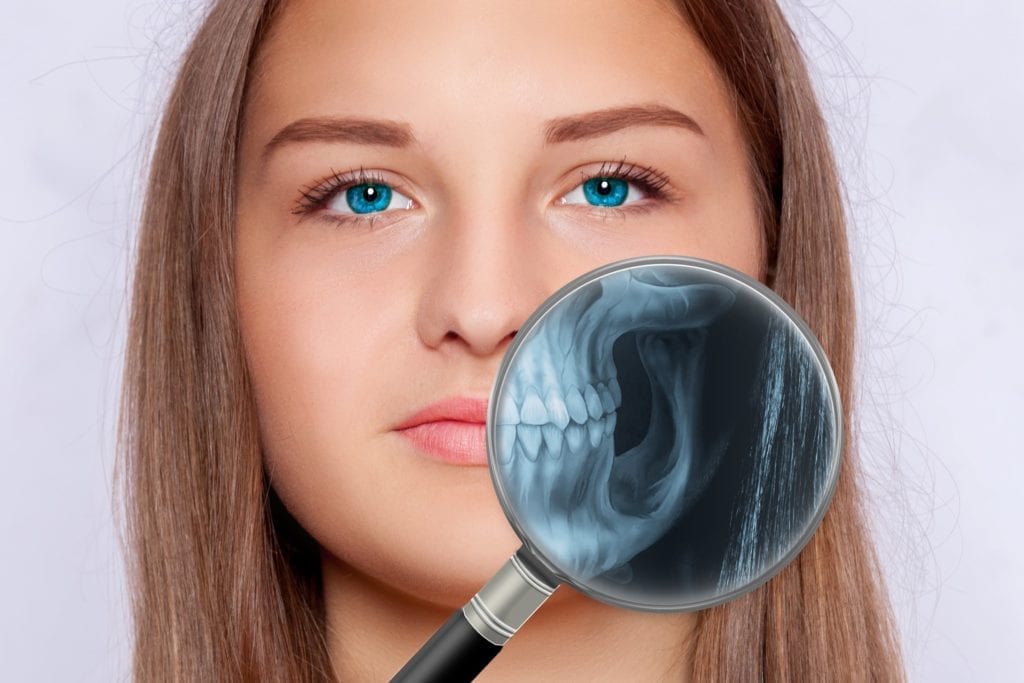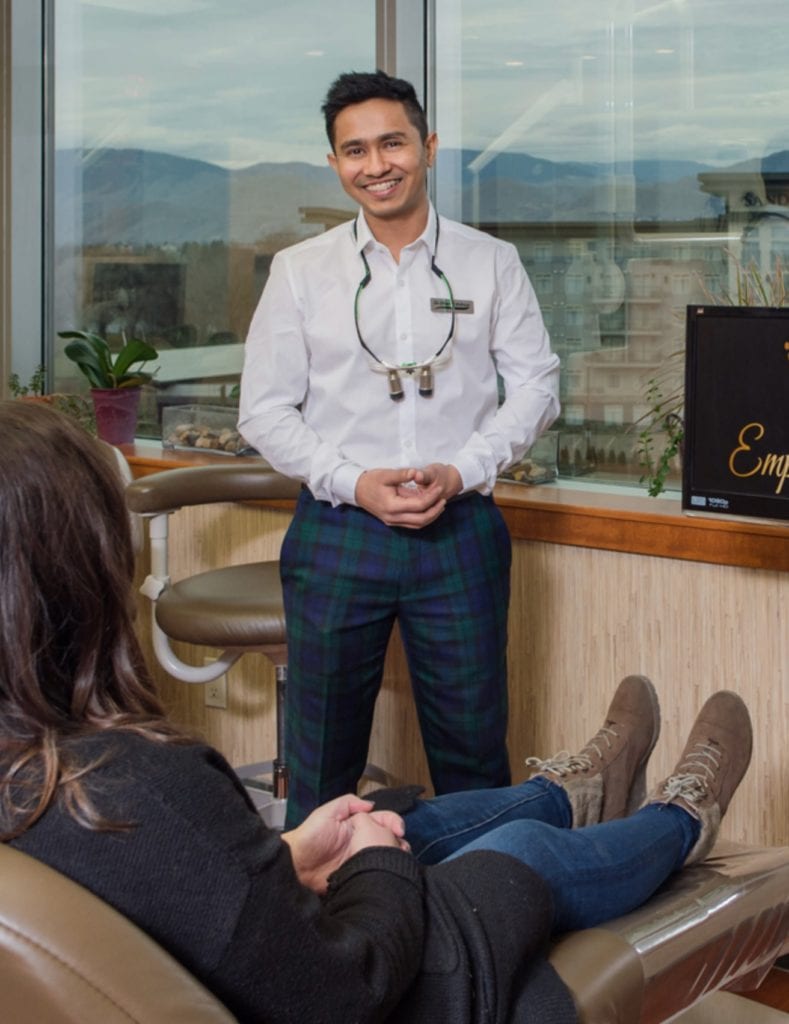Dental x-rays are one piece of dental technology that has changed the way dentists maintain their patient’s oral health. Instead of simply relying on a visual exam of the teeth and gums, dental x-rays allow your dentist to perform an in-depth examination of the internal and external structures of your teeth. Not only does this allow your dentist to accurately diagnose potential problems, but it allows them to do so sooner, which can make treatment less invasive.
Generally speaking, most dentists will conduct dental x-rays 1-2 times a year at the same time you come in for your semi annual dental exam and cleaning. The reason for this is that it allows them to carefully track your oral health so they can see problems before these problems progress. In order to track your oral health with dental x-rays, your dentist will take multiple exposures at different angles. These exposures will include both the inside and outside of your mouth so that your individual teeth and overall bite can be carefully examined.
One main reason why dental x-rays are so important is because of the things they can show. Here are some things dental x-rays can find:
Tooth Decay

Your dentist can spot some cases of tooth decay simply by looking into your mouth and/or using an explorer probe to test the surface of your teeth. However, early signs of decay can be quite noticeable on a dental x-ray. By detecting cases of tooth decay early, your dentist can take the necessary steps to prevent the problem from getting worse. Depending on how far the decay has progressed, some cases can be treated with fluoride, while others will need a composite filling.
Old Dental Restorations
Unfortunately, dental restorations don’t last forever and they will eventually start to wear out. Worn out restorations may be able to be seen during a visual exam, but they are sometimes confirmed with dental x-rays. Additionally, dental x-rays can show areas of decay around or underneath the restoration, which cannot usually be seen during a visual exam. When decay starts forming around or underneath the restoration, it means that the restoration needs to be replaced.
Bone Loss
Dental x-rays also allow your dentist to examine the health of your jawbone. This is especially important if you have lost one or more teeth. Unfortunately when a tooth is lost, it causes bone loss in the jawbone that can change the shape of the bone and impact the surrounding teeth. Bone loss usually occurs about six months after a tooth is lost and will continue to get progressively worse. However, dental implants may be able to be used to replace missing teeth and preserve the jawbone.

Impacted Wisdom Teeth
Wisdom teeth are the third set of molars that begin to erupt during the late teens and early twenties. However, the majority of wisdom teeth do not erupt properly and instead can cause an infection or damage to the surrounding teeth. Dental x-rays allow your dentist to determine if your wisdom teeth are erupting properly or if they need to be extracted to preserve your oral health.
Cysts or Tumors
Cysts and tumors that have developed underneath the gums can also be seen in dental x-rays, however they are not very common. Additionally, abscesses caused by pulp infections are also visible in dental x-rays.

Dr. Admar holds dual certificates — a Bachelor of Dental Surgery (BDS) in 2010 from India and a Doctor of Dental Surgery (DDS) in 2014 from Canada. He is now a full time practicing dentist in Kamloops where he provides a variety of services. Dr. Admar spends hundreds of hours in continued dental education to stay up to date in cosmetic and implant dentistry and he has achieved several advanced qualifications.


